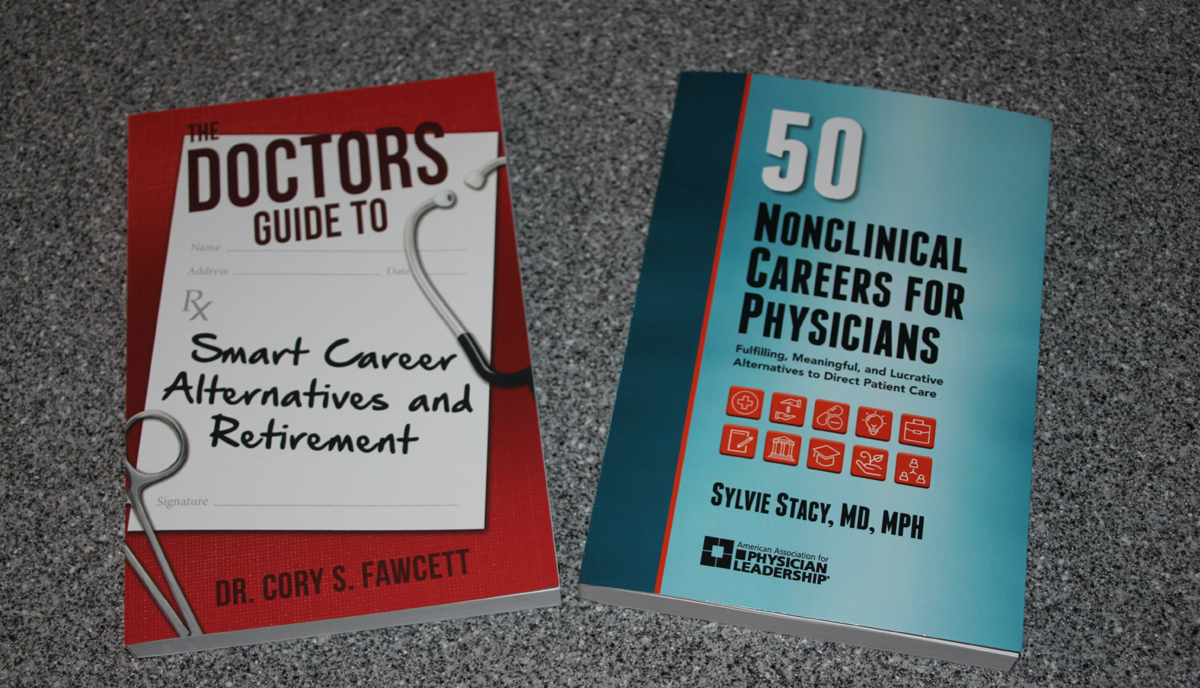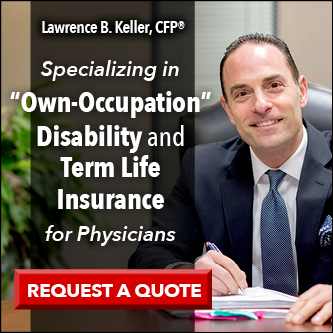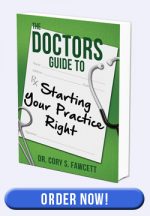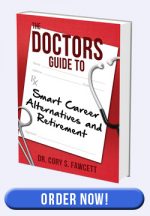It is not often I pick up a book and realize that someone has already written the book I was thinking of writing, but today it happened to me. When I published my book The Doctors Guide to Smart Career Alternatives and Retirement which is aimed at the physician who is fed up with his job and is thinking about making a change, I wrote about the three options physicians have:
1: Make changes to their current job in order to enjoy it more.
2: Switch careers to something more fulfilling.
3: Retire
When I put together my book I wanted to list and describe many jobs physicians can do by building on their current knowledge. But that would have made the book extremely long, so I concentrated on a few nonclinical career choices to give an idea of where to look. I thought I could later write a companion workbook that would be a long list of jobs that fit well with a physician’s training.
Sylvie Stacy, MD, MPH, sent me a copy of her new book, 50 Nonclinical Careers for Physicians. As I looked through the book, I realized this was the book I planned to write as a companion to my book. Dr. Stacy beat me to the punch. I highly recommend this book. It beautifully lists and describes career alternatives for physicians looking for a new path. I think these two complementary books should be sold together as a boxed set.
My book discusses why physicians want to change careers, and how to achieve their ideal career. Only one chapter of my book is devoted to listing and discussing various nonclinical career options. Dr. Stacy has expanded that chapter into 281 pages of nonclinical career options to consider.
In the introduction she covers five misconceptions about nonclinical careers. These are often roadblocks keeping us from moving out of clinical medicine. Eliminating these roadblocks is a necessary first step toward changing careers.
Following are misconceptions she helps us overcome:
1: Nonclinical careers are for physicians who are burned out.
2: If physicians take nonclinical jobs, there won’t be enough doctors left to care for patients.
3: Working outside of clinical medicine is “Selling Out.”
4: A physician needs many years of clinical experience to transition to a nonclinical job.
5: Doctors owe it to society to practice clinical medicine.
She then launches into her 50 nonclinical career options. In reality, there are a lot more than fifty alternatives, since each of her options present several job opportunities in that area. These 50 nonclinical career options are divided into ten different sectors of jobs, such as Health Care Services Delivery, Pharmaceuticals, Technology and Innovation, Communications, and Education and Research to name a few.
Each job option is further divided into descriptive sections, starting with a description of the job. There is then the role a nonclinical physician would play, which employers have this type of job opportunity and the names of similar titles for this position.
She then explains the responsibilities of a physician in this career, the qualifications needed, and she presents an income range showing how the compensation in this field compares to an average primary care physician’s compensation. Although compensation is extremely variable in these fields, just as the compensation for a primary care physician varies throughout the country, it does offer a general feel for what you might make.
Throughout the book there are also several physician profiles. These are interviews with physicians who are actually in these nonclinical careers. Getting the inside scoop is very helpful. She asks each of them the following nine questions to give you a feel for their job.
1: What does your organization do?
2: What is your role within the organization?
3: What are your responsibilities?
4: What does a typical day on the job look like?
5: How does your medical background and experience contribute to your work?
6: What are the best parts of your job?
7: What are the main challenges you face?
8: Where might your career go from here?
9: What are some considerations for physicians interested in this career?
She concludes the book with a section on how to make a transition out of clinical medicine and what to do next in your search for change.
If you have already read my book and were wishing I had expanded my chapter on nonclinical career options, then this is the book for you. If you are just beginning to think about a nonclinical career, or you are wishing to make some changes in what you are currently doing to add fulfillment in your career, then you should read my book first, then Dr. Stacy’s book. Just click on the titles below to order the books from Amazon.
The Doctors Guide to Smart Career Alternatives and Retirement – Cory S. Fawcett, MD, FACS, CHPC
50 Nonclinical Careers for Physicians – Sylvie Stacy, MD, MPH
If your desire to switch to a nonclinical career originated from a major problem such as a job loss, a medical condition preventing you from doing clinical medicine, or losing your license, it may also have created a major financial crisis in your home. If that is the case, my newest book will help in your recovery.
The Doctors Guide to Navigating a Financial Crisis – Cory S. Fawcett, MD, FACS, CHPC
Dr. Sylvie Stacy can be found at her website Look for Zebras where she offers other resources for those looking to leave clinical medicine. For those of you looking for a nonclinical job, check out the listings of nonclinical job openings on her website.









